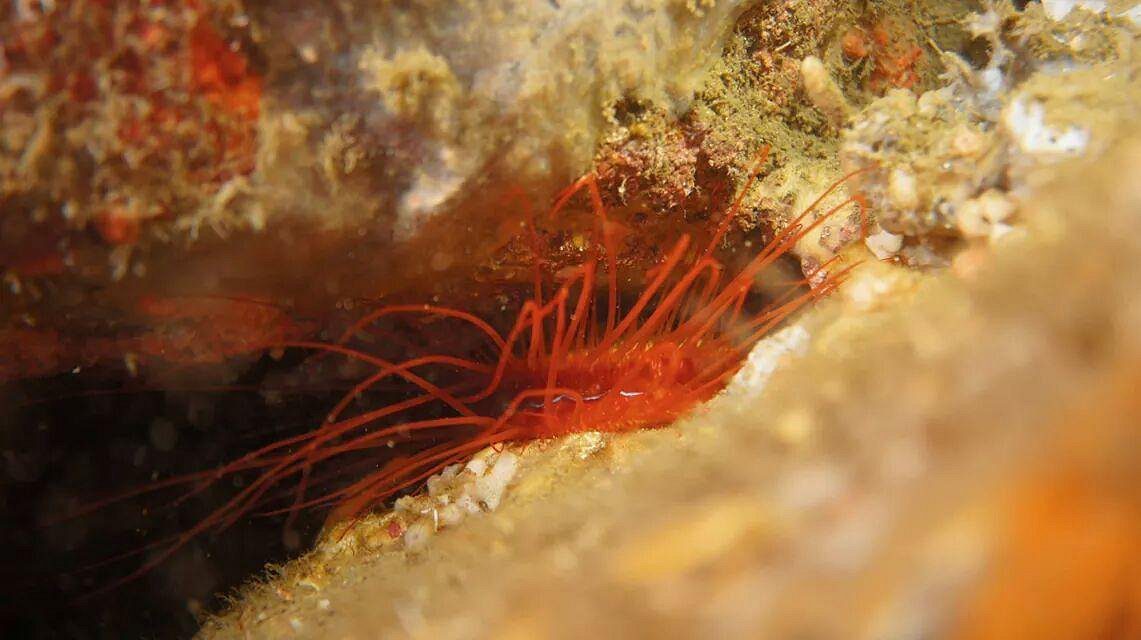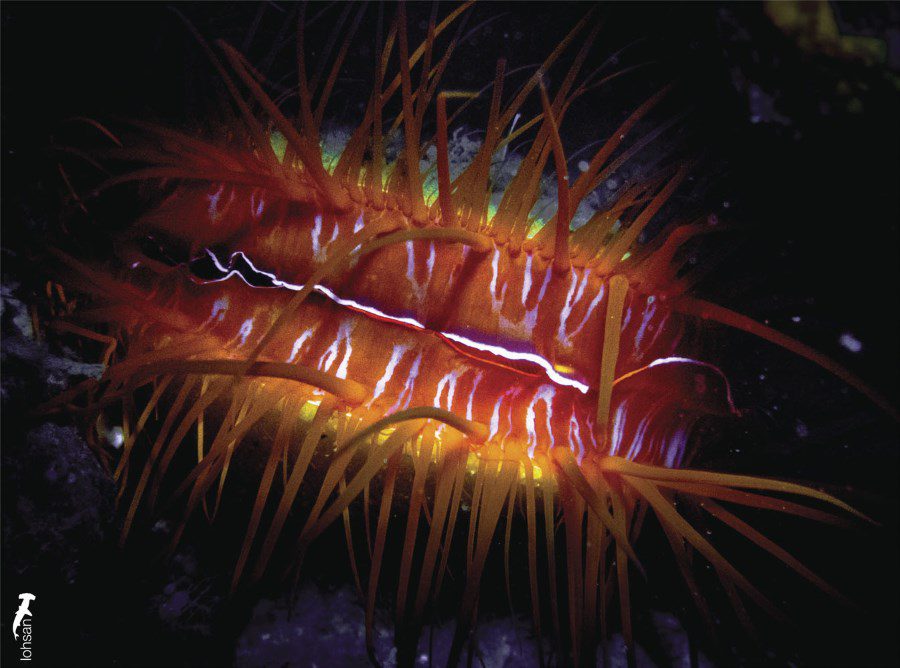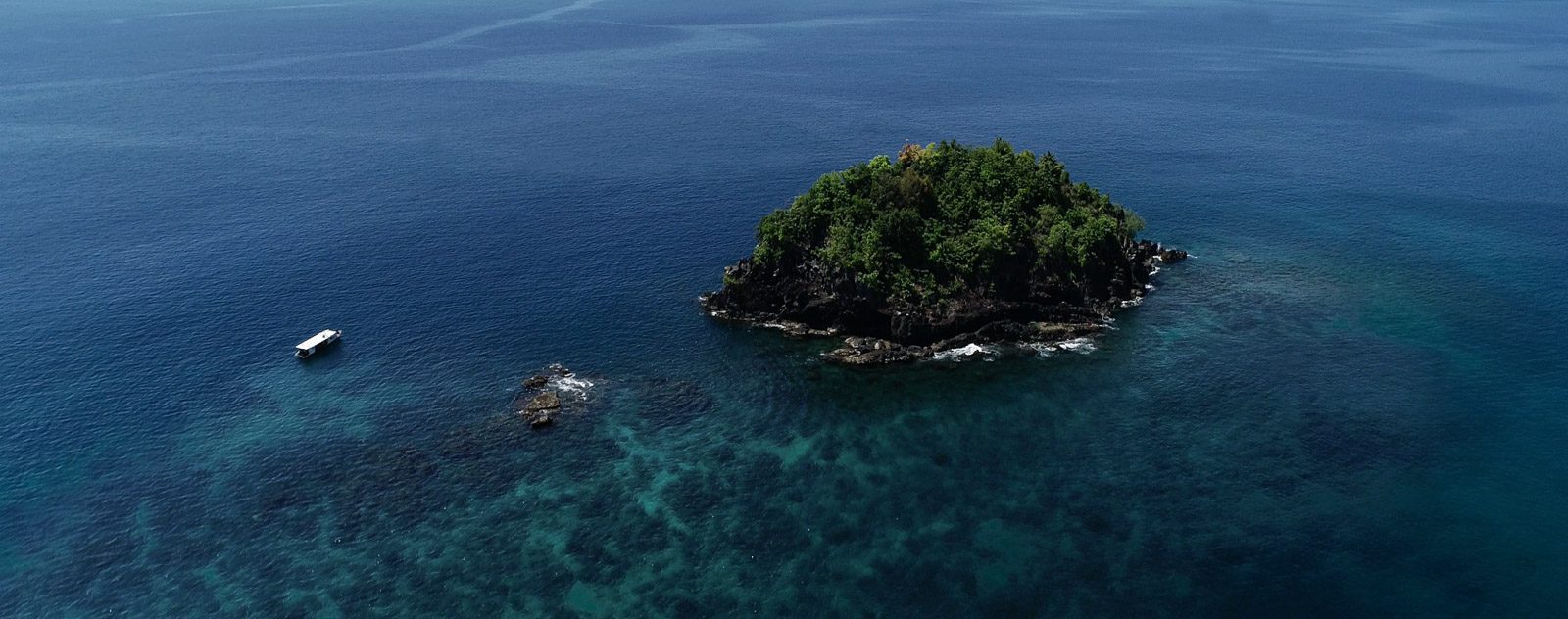The Shock Factor: Exploring the Electric Clams in the Lembeh Strait

When it comes to marine life species with special or unusual abilities, then the electric clams has to be near the top of the list! These incredible critters are a rare find here in Lembeh so a sighting is extra special. In this Blog we take a more in depth look at this species, including how they generate their electrical-looking pulses of light.
Names and Classification
Electric clams, known scientifically as Ctenoides ales, are also known by a variety of other common names, including the electric flame scallop, disco scallop, electric clam and disco clam. The names are all derived from the flashing electrical-looking lights that are on display.
Electric clams are categorized as mollusks from the order Bivalvia which essentially means they are a bivalve shell (a shell that is made up of 2 halves which can open).
Electric Clams Physicality
Electric clams vary in size, mostly they are around 2 inches long, but larger species have been found, measuring up to 4 inches across. Their shells are often a mottled brown color but due to their habit of wedging themselves in cracks in walls, their shells are often not visible. What is visible however is the bright red-orange tentacles that grow out of the shell’s mantle. The tentacles are disproportionately long, and can measure longer than the actual shell itself.
By far the most noticeable visible feature of electric clams is the characteristic flashing lights they create along the edge of their mantles. Despite the name, these flashing lights have nothing to do with electricity. These flashing lights are a result of ambient light reflection.
Electric clams possess highly reflective silica spheres along the outer edge of one side of their mantle. When these spheres catch the light, they briefly reflect the light back outward. The other side of the mantle lip then catches and absorbs this light, thereby creating an asynchronous light display. The effect of this reflection resembles arcing electricity, hence the common name “electric clam.”
Where to Find Electric Clams

We are extremely fortunate to find electric clams while diving in Lembeh as they are found in limited locations globally. Electric clams are found only in Indian and Indo-Pacific waters. Most commonly they are spotted in central Indo-Pacific between Indonesia and New Caledonia off the coast of eastern Australia.
Electric clams tend to wedge themselves in the fissures of walls which makes them difficult to see. They appear to prefer depths of greater than 3 meters and have been spotted as deep as 50 meters.
Swimming
Yes, that’s right! Electric clams can swim!! Those tentacles are not just for decoration. The clam uses the tentacles for swimming – meaning that it can move around. Despite this ability, once the clam has found a fissure, it will stay in the same spot unless either a threat from predators or a lack of food forces it to move on.
Feeding, Predation and Defence
Electric clams have a vast number of predators that range from fish and other crustaceans through to octopus and cuttlefish. Scientists believe that electric clams emit flashing lights to warn away predators – but that’s not their only defence. The red mantle also contains foul-tasting peptide-like compounds and the light is thought to warn predators that the clam doesn’t taste good. One of the main predators of electric clams is the mantis shrimp and in laboratory tests, scientists found that the electric clam actually sprayed acidic mucus at a mantis shrimp as an additional final defence mechanism.
Electric clams are primarily filter feeders that feed on plankton. The clams filter water through their siphons and gills, and trap plankton particles in a sticky mucus.
Breeding, Reproduction and Life Cycle

Electric clams are a solitary species and do not search for a mate in order to reproduce.
Reproduction in electric clams takes place via broadcast spawning. Both the male and female clams will release their gametes into the water and tides and currents take care of the rest – or not. There is no solid evidence to date regarding how frequently they spawn or how many eggs are released in a single spawning.
According to some estimates (but not confirmed) electric clams may live for up to 30 years in their natural habitats.
IUCN Status and Threats
Electric clams are not listed as endangered by the IUCN or any other regulatory agency. Although not listed, it is thought that they are declining in numbers. The biggest threat to electric clams outside of predation is climate change resulting in a decreased availability of plankton, their main food source.
Electric Clams and Underwater Photography
When attempting to photograph electric clam the key to a solid image is to capture the flashing light and the bright red color of the mantle. To capture the light emissions, it is often futile to try and time pushing the shutter button with the flashes. It is best to use a burst mode on your camera so that it takes multiple photographs in quick succession.
If you would like more advice relating to your specific camera, lenses and lighting gear, call in to our Photo Center and speak to our team of Photo Center Assistants – they are always on hand to help and offer guidance. There is also a range of underwater photography equipment and accessories to rent and available for sale.
Dive into the Lembeh Strait with us!

Are you planning a dive trip to the Lembeh Strait? Here at Lembeh Resort we offer unparalleled luxury accommodation and we are the only dive resort in Lembeh that offers a full time, on-site Photo Pro, full time marine biologists, a Backscatter Authorized Photo Center, a spacious camera room AND photography and marine biology trained dive guides.
If you’d like more information about diving with us and staying with us, contact us on: reservations@LembehResort.com. We look forward to welcoming you to Lembeh Resort soon.
Further Reading
If you’ve enjoyed reading this Blog then you may be interested in reading more about the marine life species found here in the Lembeh Strait:



